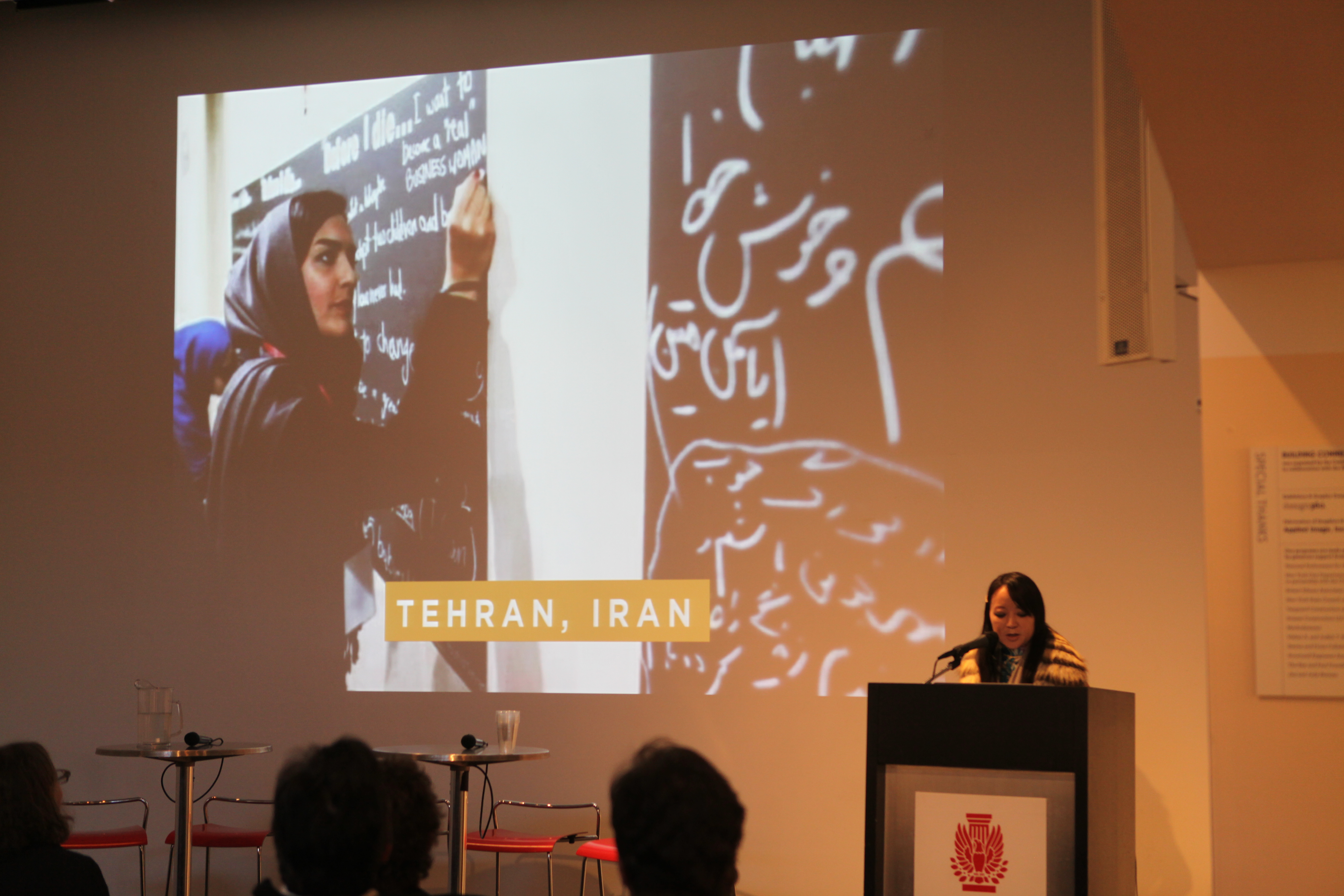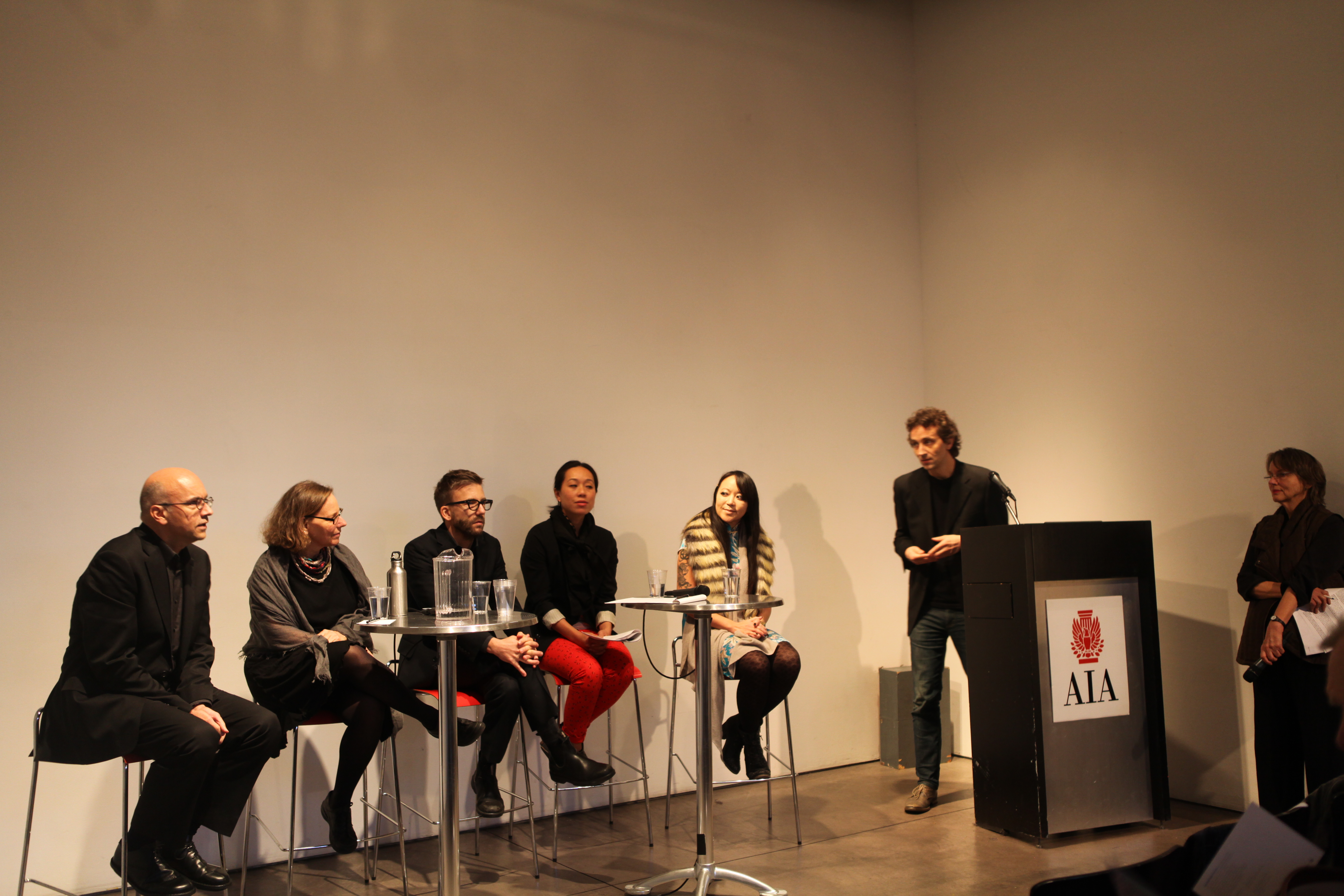by chas
As Miodrag Mitrasinovic, associate professor of Urbanism and Architecture at Parsons The New School for Design, pointed out at the 12.07.13 “Cultivating Engaged and Inclusive Urban Practices” forum, many people talk about the importance of inclusive urbanism and design, but don’t follow through with it in practice. Luckily, the panel comprised five individuals who walk the walk. The event was the first of two forums presented in conjunction with the traveling exhibition “People Building Better Cities: Participation and Inclusive Urbanization.” Beginning in Bangkok in February, the exhibition has been seen in 10 cities so far, including New York. Global Studio’s Anna Rubbo introduced the panel by noting that the exhibition comes at a pivotal moment for New York City, when the mayoral election, among other events, has brought inequality and inclusivity to the forefront of public conversation. In this context, architecture, planning, design, and advocacy are making great strides to address issues of social justice through the built environment. Panelists spoke about projects that are subverting traditional top-down approaches to the creation of the urban environment and bringing a public voice to various facets of urbanism.
Tobias Armborst, assistant professor of Art and Urban Studies at Vassar, and principal and co-founder of Interboro Partners, and artist Candy Chang, whose work combines public art and civic engagement to create participatory projects, spoke about temporary installations (although with hopefully ongoing effects). Both noted during the Q&A portion of the program that temporary projects allow for bolder ideas and strategies, and motivate people to step back and think about these innovations in the scheme of addressing larger questions, beyond focusing specifically on the project itself.
Armborst’s firm, Interboro Partners, was selected to design the outdoor space for MoMA PS 1’s WarmUp concert series this past summer. Seeking a temporary plan that would have a lasting impact on the museum’s Long Island City neighborhood, Interboro interviewed local organizations and businesses about what they wanted for their own use, weaving together the museum, its visitors, and its surroundings in a way that addressed the lack of inclusivity and overlap between institution and community. Interboro then purchased things like mirrors for a local dance studio, ping pong tables for a taxi dispatcher across the street from PS 1, and chess sets for a senior center. They were used in the PS 1 outdoor space for the summer season, then distributed to the organizations that had requested them at susmmer’s end. The plan promoted more crossover between the museum and neighborhood, making steps toward bridging the gap. To many visitors, the “official” cultural institution tends to overshadow the local culture, and Interboro sought to cultivate relationships and promote understanding about the different groups that share space in Long Island City.
Chang’s participatory public art projects have included vinyl stickers on abandoned buildings inviting passersby to write what they’d like to see in these buildings, and writable surfaces with prompts like “A Confession” and “Before I die, I want to…” Residents have noted more vibrancy in neighborhoods where Chang or local groups place these installations, creating gathering spots that become both social spaces and attractions. Chang saw locals express pride in their communities and make connections when they discovered shared ideas for the future of their neighborhoods. The website Neighborland was borne out of these projects. The online platform allows people to suggest improvements to be made where they live and connect with neighbors who want the same things, building collective power to share resources and effect positive change from the bottom up.
Like Neighborland, Wendy Brawer’s open source project, Green Maps, is a platform for neighbors to connect and share information about the space they inhabit by digitally or physically mapping local natural, sustainable, and cultural sites. Any individual or group can create a Green Map for a neighborhood, opening up informational access to diverse populations all over the world. Brawer invoked specific cases, including Brazil, South Africa, and Cuba, where residents have taken the platform above and beyond to address specific social issues and promote participatory planning practices.
Mitrasinovic also instills a new population with an understanding of the intersection between design and social justice through Parsons’ Urbanisms of Inclusion program, which explores global urbanism through the lens of transformative design, research, and education. Students gain an understanding of the sociospatial tensions in a certain neighborhood, and then propose new public infrastructures that empower marginalized residents.
Shin-pei Tsay, research and development director for TransitCenter, a non-profit startup advocating for innovative transportation solutions, works on the policy and advocacy side of urbanism to address the fact that many citizens feel excluded from, and overwhelmed by, policymaking. Tsay herself felt the local, human factor was absent during her time working for larger policy institutions, and has since worked to re-insert people into the process of creating policy, even on large-scale projects. Citing street design as an example of seemingly broad policy with a very personal, human impact, Tsay noted that empowering residents to get involved at every level influences people to see their spaces in a new way and not to simply accept the negatives of their physical environment.
Refreshingly, the five panelists not only spoke passionately about their commitment to social justice through design, but also demonstrated a wealth of actionable ideas for planners, students, residents, policymakers, and others. While all acknowledged there is still work to be done, it seems that Rubbo was correct in her introduction: more and more groups are collaborating and demanding greater inclusivity and engagement in the conception and planning of physical space.
Cassie Hackel is a community development professional with a background in multidisciplinary urban studies. She is currently a research associate with Plastarc Design Metrics.
Event: Cultivating Engaged and Inclusive Urban Practices
Location: Center for Architecture, 12.07.13
Speakers: Tobias Armborst, Co-founder, Interboro Partners, and Assistant Professor, Vassar College; Wendy Brawer, Founding Director, Green Map; Candy Chang, Artist, Civic Center, New Orleans; Miodrag Mitrasinovic, Associate Professor of Urbanism and Architecture, Parsons The New School for Design; Shin Pei Tsay, Research and Development Director, Transit Center; Anna Rubbo, Founder, Global Studio, and Research Scholar, CSUD, Columbia University (moderator); and Matthias Neumann, normaldesign (moderator)
Organized by: Center for Architecture, Global Studio, and CSUD, Columbia University

